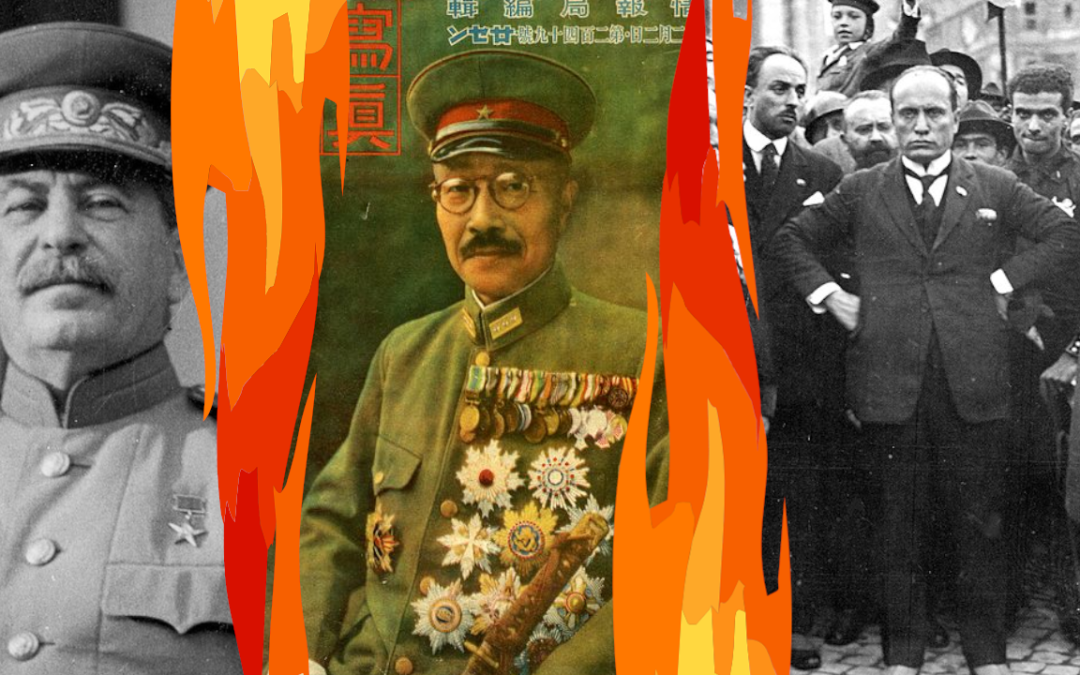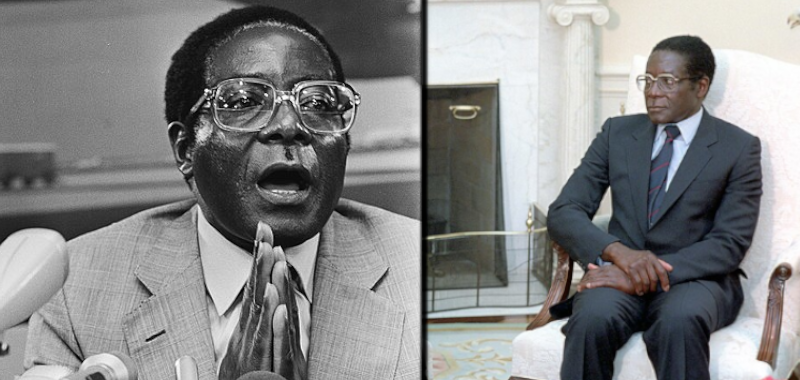Some say there can be no such thing as a good dictator. That the very nature of dictatorial rule is contrary to the conditions of a healthy modern society. Perhaps that is true, yet it should be obvious to all that not all dictators are made equal. Many dictators, despite their greed and need to extract wealth from the state, recognize that their best chance at not being overthrown is to be somewhat reasonable. To be moderate, at least moderate enough to maintain stability in their nation. But not all dictators are reasonable. Some are so reckless, so cruel and deluded that they drag their country into total despair. I speak, of course, of dictators who ruined their country.
10 Idi Amin
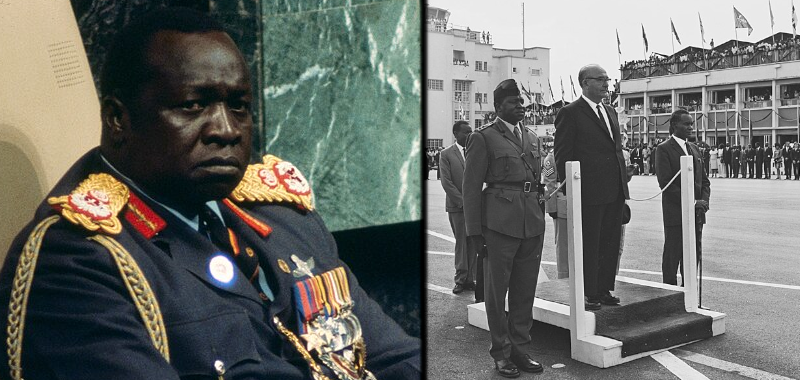
One of the more infamous dictators, Idi Amin is known worldwide was the brutal despot of Uganda. Coming to power through the military, he launched a successful coup in 1971, installing himself as president for the best part of that decade. A paranoid pan-African, one of his first actions was to expel Asians from Uganda, many of which had lived there all his life. Many of which also owned and operated businesses. The economy collapsed and Uganda came to rely on foreign aid. Amin was a lunatic, frequently having political allies killed for no obvious reasons. He declared himself to be the king of Scotland, and even wrote love letters to Queen Elizabeth. Amin went so far as to support terrorist groups and provide asylum to hostage takers. Yet the real kick in the teeth for Uganda was Idi Amin’s foolish invasion of Tanzania in 1978.
What he intended to be a war of conquest devolved into a humiliating reversal when the Tanzanian army entered Uganda and overthrew Amin’s regime. That was in 1979, by which time almost half a million people were dead. Yet like too many dictators who ruined their country, Idi Amin would never truly face justice. He escaped such by fleeing, first to Libya and then to Saudi Arabia, where he died of natural causes in 2003.
9 François Duvalier
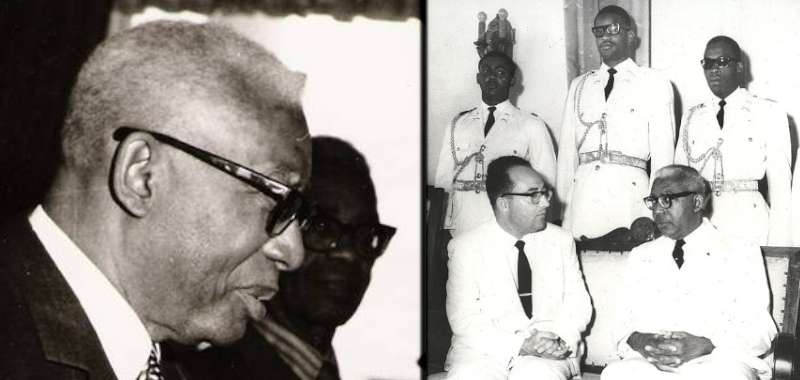
Haiti is the poorest country in Latin America and the Caribbean. There are many reasons for this, true, but the devastation imposed by the Duvalier family is by far the main one. For 14 years he ruled with an iron fist, weaponizing resentment against religious and ethnic minorities to divide his people. Through out his rule armed death squads exterminated any political rival brave enough to speak out. Despite this, an impressive cult of personality grew around Duvalier, who preferred to be known as “Papa Doc” to the people of Haiti. He claimed to be a Voodoo priest, breathing life into an old and respected religious tradition. In fact, government propaganda claimed he was more than human – that he was an ancient voodoo spirit on par with god himself. The supposed magic he claimed to possess did little to help Haitian residents though.
As part of his plan to pacify the people, many successful businesses were seized from their rightful owners. This only deterred foreign investment, and along with corruption, led to the virtual collapse of Haiti’s economy. Famine gripped the island nation, the consequences of which still affect Haiti today. All the while, François Duvalier lived an isolated life of luxury inside his presidential palace.
8 Hideki Tojo

Contrary to common belief, power was not primarily held by the emperor. No, the vast majority of decisions were made by the military, and personally by Hideki Tojo. Born into a traditional Samurai family, the young Tojo came of age in a world of strict convention. Yet Japan was changing. Just a decade before she had been a backward and isolated kingdom. Now though, going into the 20th century, Japan was a modern state in the swing of industrialization. The old ways were collapsing, and in their place, a new social order rose. And so the low ranking Hideki Tojo was able to rise through the ranks of the army on merit and skill. By 1934 he was an influential general in the army, and in shortly before Japan went to war, became Minister of the Army.
A strong voice in support of going to war, Tojo was appointed Prime Minister just months before Japan entered the second world war. He would be in this position until mid 1944, meaning he oversaw and orchestrated many of Japan’s brutal war crimes of the era. Boasting unparalleled support from the military, Hideki Tojo ruled as a dictator. He was personally responsible for multiple mass murders. Perhaps he believed that in doing so, it gave the Japanese empire a greater chance of victory. Yet in the end, Japan was soundly defeated. Two of it’s cities were victim of nuclear assault, it’s entire political system torn up, and foreign territories stripped.
The Japan of 1950 was a much different country to that of 1940. In many ways it was better. But be in no doubt, Hideki Tojo brought the Japanese empire he so loved to ruin. Tojo himself would not live to see this vast change though, being executed by hanging in 1948.
7 Mohammad Daoud Khan
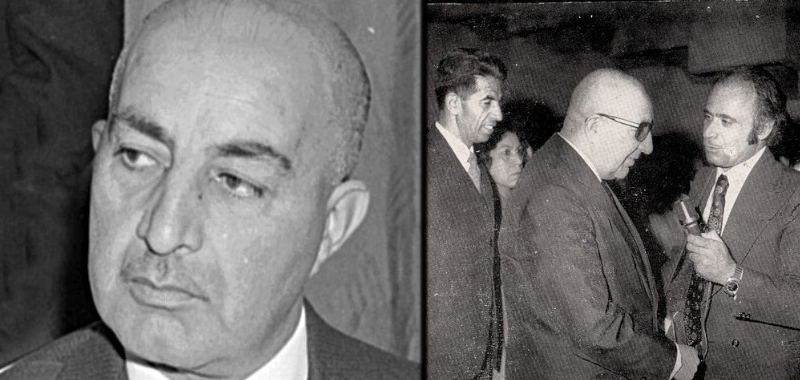
Believe it or not, Afghanistan was once a relatively stable country. Ruled by a long line of kings, it had broadly resisted colonization by both the British and Russian empires. A rare thing for that part of Asia. But in 1973 the king was overthrown by his own cousin, Mohammad Daoud Khan. Khan had been made Prime Minister in 1953, and for the most part, supported the king. But he felt the world was changing, and the only way for his family to maintain control of Afghanistan was to adopt modern politik. Specifically, he suggested a one party system be implemented. It’s a method familiar to dictators all over the world, and Mohammad Daoud Khan certainly wanted to be a dictator. Deciding he could do a better job at ruling the nation, he arranged a military coup, abolished the monarchy itself, and installed himself as President.
No one knew it at the time but this single power play would bring the virtual destruction of Afghanistan. Despite his rabid repression of communists, his policies angered conservatives and the clergy. He was too progressive for his rule to sit well with them, but not progressive enough to please liberals. So as time went on he grew more and more hated. So much so that the Afghan military eventually abandoned him. In 1978 he was deposed and killed by a small communist force. Thus began an even less stable period of government which in time would rely on Soviet military support. After the Soviet-Afghan war, the Taliban took over. The 9/11 attacks guaranteed their near destruction at the hands of NATO. But the warfare only continued.
6 Joseph Stalin
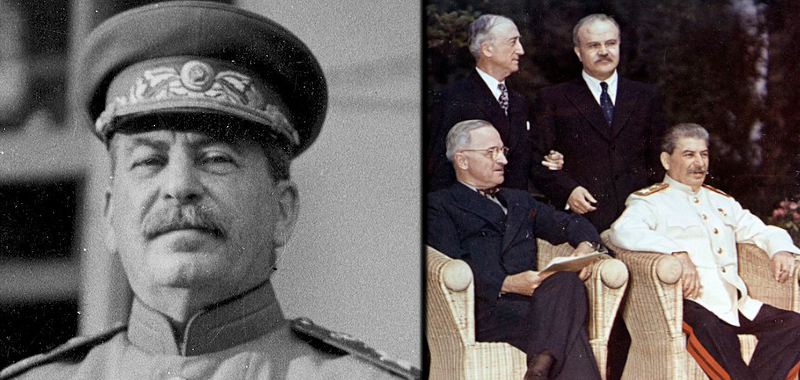
The Soviet Union was nightmarish from the day of it’s inception. It’s first leader, Vladimir Lenin, oversaw mass executions, including methods like crucifixion. In just four years up to a million people died in what is now known as ‘The Red Terror’. But even this orgy of violence would soon be overshadowed by his successor, Joseph Stalin. Stalin was a psychopath. A notorious thug able to hide his cruel nature long enough to gain power, he was less concerned with building a stable soviety. He threw away what little progress Lenin made, leading the world’s largest country into mayhem. Simply put, there were no human rights in Stalin’s Russia.
Though less well versed in Marxism, he was somehow more ideological than Lenin, obsessively killing in the name of equality. Stalin was also ferociously anti-intellectual. Many of the most gifted members of state institutions were dismissed and killed – why? Simply because Stalin was intimidated. Joseph Stalin was infamously paranoid. During his time in power, millions of people were forcefully relocated. An estimated 18 million sent to the gulag, and millions more sent into exile. By the time of his death in 1953, roughly 20 million of his own people had been killed, and the Soviet Union was far different than it’s founders intended.
5 Jean-Bédel Bokassa
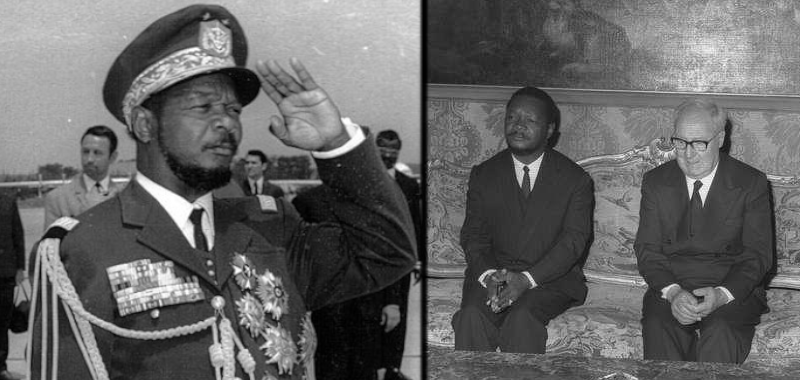
Few dictators are as deluded as Jean-Bédel Bokassa. Despite his position as the bumbling tyrant of a small impoverished nation, he considered himself a great conqueror. In fact, he even declared himself emperor of the Central African Republic, rather than merely it’s president. That was in 1976, and for a decade already he had ruled as dictator. For ten hard years Bokassa enjoyed a lavish existence while almost all others in his nation starved. Any objections to this were met with harsh retribution. This is nothing new for dictators – but Bokassa really took it to a new level. The Central African Republic had virtually no industry, trade, or resources. Yet he kept a menagerie of well fed exotic animals. Then in 1976 he seems to have lost his mind.
Taking lead from Napoleon, he declared his country and empire, and organized a grand coronation. Dignitaries from across the world were invited, and no expense was spared to impress. From clothing to jewels, the whole thing was treated as if the CAR were a wealthy nation. The same clothing house that created clothing for Napoleon in the 1800s was even contracted. Such was the extravagance. Bokassa’s crown was also forged by a renowned French jeweler. In the end, the cost of this single even was 20 million US dollars. In modern terms that’s more like 104 million. This caused the total bankruptcy of a nation already straining under the weight of financial hardship. In the end this proved too much. In 1979, Jean-Bédel Bokassa was overthrown via a military coup, having run the Central African Republic into the ground.
4 Pol Pot
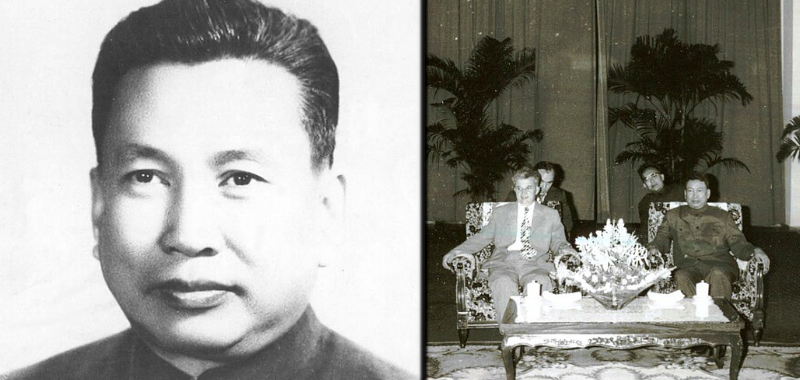
Let’s be honest. No countdown of dictators who ruined their country would be complete without Pol Pot. Real name Saloth Sâr, he rose to power by pure accident of history. For many years Pol Pot led the communist rebel group Khmer Rouge. No one ever thought they would come rule Cambodia, and when they did, a horrific genocide immediately began. First of all, the entire population of towns and cities were marched out and forced into labor camps. Any who resisted were shot. Any who seemed upper class or simply educated were shot. By 1979, more than 1.5 million people had been killed – that’s roughly 20 percent of Cambodia’s total population.
The nation was in a state of ruin. The economy was literally non existent, and there was simply no social order. Only death and chaos. So in the end, the Vietnamese army had to invade Cambodia and overthrow the Khmer Rouge. Ironic, considering Pol Pot originally seized power with the help of his North Vietnamese allies. Along with surviving Khmer Rouge loyalists, Pot fled into the dense jungle of rural Cambodia, fearful of the justice he might face. That justice never came though, and this terrible man died in his sleep almost two decades later. Yet there is some solace to be found in the condition of his final years. Years spent hiding like a timid rat. It’s a kind of existence all dictators who ruined their country should be forced to live. That of a dejected outlaw.
3 Benito Mussolini
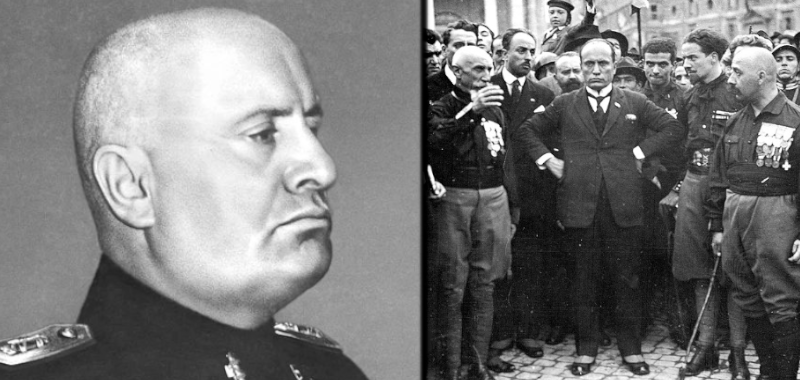
Benito Mussolini wanted to re-establish the Roman Empire in modern times, with modern weapons and modern tactics. In actuality, his rule saw Italy fail to expand and carved up by foreign armies. Italy was not ready for war in 1939, her army still carrying pre-world war one weaponry. The nation was also already exhausted from the slew of wars launched by Mussolini in Africa. Yet she was allied with the world’s most efficient military machine. As such, Germany had to rescue Italy from their disastrous 1940 invasion of Greece. That’s the hard truth Mussolini was never able to accept. For all his tough rhetoric, the Italian military was third rate. In the face of a global grinding war, Italy wilted.
As their nation collapsed around them, the people of Italy turned on their glorious leader. In the end, Mussolini and one of his many mistresses fell into the hands of angry communists. They were swiftly killed, dragged through the streets and hung upside down before jeering crowds. They weren’t the only ones in trouble, though. Since the Italian King failed to effectively blunt the dictator’s ambitions, a national referendum soon abolished the Monarchy. So while Italy today is modern and prosperous, it is very much unlike the country Mussolini knew.
2 Kim Il Sung
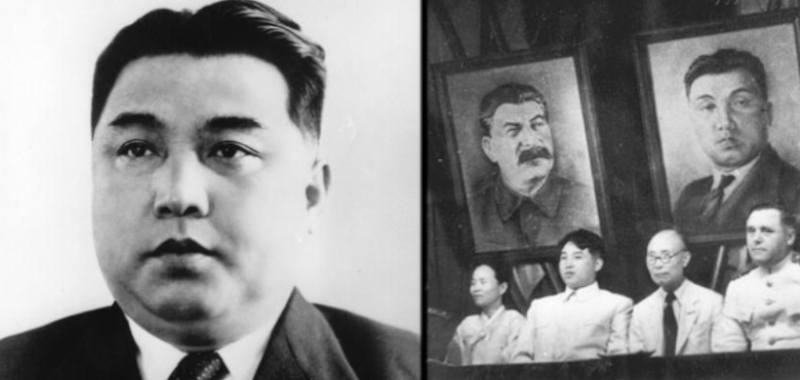
In the face if modern circumstance, North Korea was once much more wealthy than South Korea. By the end of the Korean war, a military stalemate had emerged. Necessity required compromise, and the Korean peninsula was divided in half. Communist forces took the north, while the capitalist west secured the south. Luckily for the former, Korea’s industrial heartland was firmly in the north. All the south had, on the other hand, was open farmland. As such, the standard of living was considerably higher in the North. But nothing destroys wealth like communism, and under the leadership of Kim Il Sung, the industrial inheritance of North Korea’s past was squandered. He demanded that the nation become entirely self sufficient, requiring a total shift in economic focus. In other words, the more high level elements of production were abandoned in favor of agriculture.
This irrational reversal was compounded by Kim Il Sung’s totalitarianism. Cutting off North Korea from the world, he brutally oppressed not only his own people, but foreigners also. As the economy waned, thousands of foreign nationals were kidnapped and forcefully relocated to North Korea. Many were experts in technical fields. This was just one reason behind the crippling international sanctions on North Korea. But no matter how bad it got, the glorious leader outright refused to change policy. Few dictators who ruined their country were as pig-headed as this man. By the time of Kim Il Sung’s death in 1994, North Korea was desperately poor, while South Korea was a rapidly advancing first world economy.
1 Robert Mugabe
Before Robert Mugabe came to power, Rhodesia arguably had the strongest economy in Africa. International sanctions had failed to prevent rapid growth, and financial records show the state was well managed. But wealth, just like political power, lay in the hands of Rhodesia’s white community. And given the fact they were a minority, it is no surprise the majority had a problem with this. So in 1964 the Rhodesian Bush War broke out, pitting rebels and government forces against each other for 15 years. For the most part, Rhodesia’s army had an easy time suppressing the enemy. But by the late 1970s, the mood was shifting.
Even the white population largely grew to believe in making a deal, and in 1979 the country of Rhodesia was abolished. In it’s place arose Zimbabwe, with Robert Mugabe taking over as Prime Minister. Many hoped this new beginning would be an opportunity for justice and a spirit of fairness to seed in the nation. But like all dictators who ruined their country, the dark truth could only hide for so long.
Driven by race ideology, Robert Mugabe’s priority was to destroy white wealth. Farms and businesses were confiscated, and even poor whites were victim of abuse. Two things resulted from this. First, mass emigration saw the white population decrease by hundreds of thousands. With them went what wealth they still had. Also, many of the confiscated businesses soon went bankrupt. Turns out skill and experience are often required to keep a company running. In just a few years the strength of Rhodesia had left Zimbabwe’s economy, and ordinary citizens were having the hardest time of their lives. Famine and widespread poverty brought more violence, sometimes with the help of government forces. Yet Robert Mugabe was re-elected repeatedly – not in fair elections, of course – but re-elected he was. And so his reign of terror stretched on for decades.
As Zimbabwe fell deeper into despair, Mugabe doubled down on the policies which got them there. At one point he even publicly encouraged people to attack white farmers and steal their land. Nothing good came of it. With little food and virtually no foreign investment, the only answer to economic woes was money printing. It’s a foolish move to inflate currency for short term gain, but Zimbabwe did just that. Multiple times. In fact, Zimbabwe had an annual inflation rate of 672.5% from 1980 to 2022. An unmitigated disaster. Considering Mugabe was forced out of power in 2017, this stat shows how Zimbabwe even now is in ruin.

